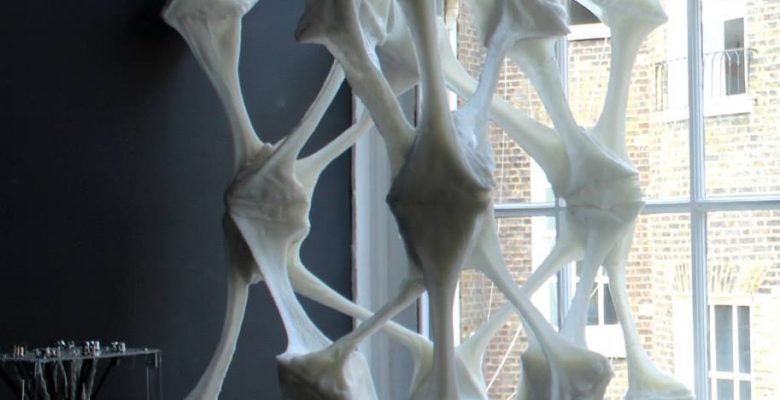Driven by a bottom-up architectural approach to integrate phase changing materials and digital fabrication tools, such as industrial robotic arms, this article presents a novel materially generated fabrication process. The process 3D prints and stretches plastics, where the extruding and freezing temperatures, pulling speeds and angles are controlled through highly customized heads mounted on robots. The objective of the research was to investigate how the phase changing property of plastics can be exploited to its fullest potential using digital fabrication tools, specifically for temporary architecture. A fairly low working temperature bioplastic, polycaprolactone, was chosen as a material for its loose molecular structure, enabling the material to be reheated and reused as much as possible. Research methods included several material and digital experiments, conducted to control the height, temperature, and structural integrity of the pulled structures. As a result of surface tension, it was concluded that the triangle is the optimal shape to deposit the material and pull from. Thus, tetrahedron nodes are used to grow the structure as a continuous web. The research was used to investigate a specific case study, which resulted in a fabrication platform that addresses construction waste issue in London by presenting an autonomous robotic fabrication system and creates 100 percent reusable, biodegradable, self-binding and continuous temporary lattice structures, which can be welded on site. The fabrication process takes place in a mobile cell autonomously run by robots. Once the temporary structure is no longer in use, the unique property of the material fabrication system allows the built structure to be shredded down and refed into the fabrication system to build a new temporary architecture nearby or on another site.
This article originally appeared in Vol 08.02 of the Perkins+Will Research Journal. CLICK HERE to see the whole article.

